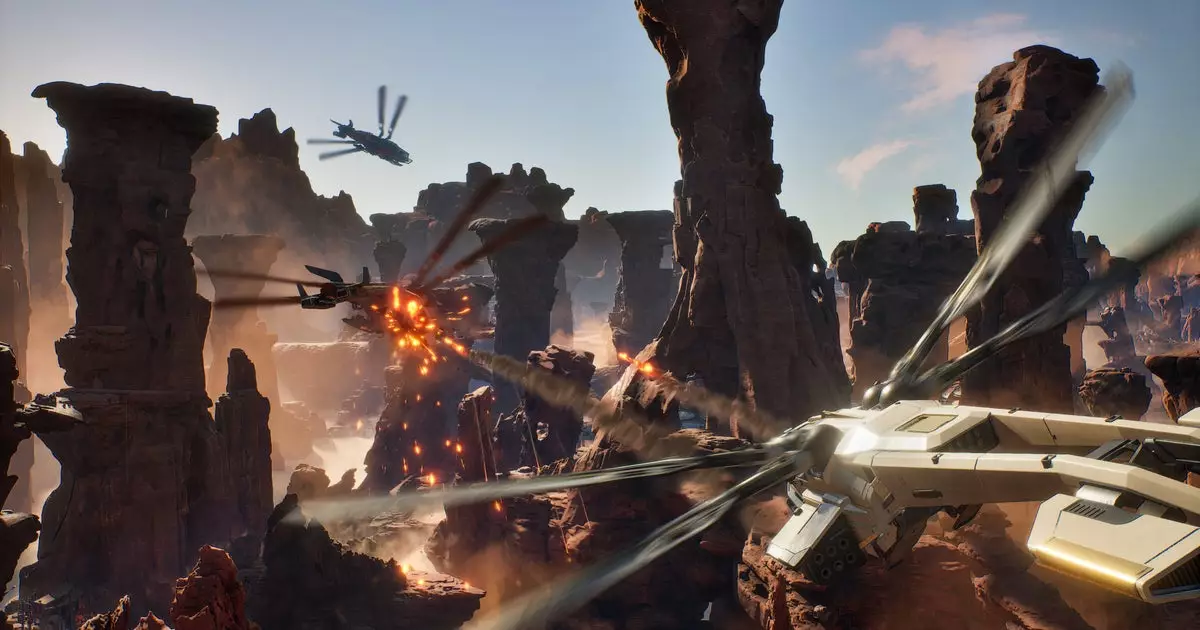In the latest update to Dune: Awakening, developers at Funcom demonstrate a commendable shift towards actively refining gameplay mechanics that truly impact the player’s immersion. Unlike some patches that only tweak numbers and stability, this one boldly introduces features designed to enhance strategic interactions and reduce frustration. For instance, the new system for collision avoidance among ornithopters showcases a clear understanding of in-game griefing, turning a potential source of annoyance into a fairer battlefield. By liberating aerial vehicles from the chaos of swarm-based griefing, Funcom signals its commitment to fostering a more balanced and engaging environment. This move shifts the focus from arbitrary difficulty spikes to player skill and strategic maneuvering, encouraging a more competitive and less punitive atmosphere.
The addition of one-click resource transfer—specifically for blood and water—further exemplifies a player-centric approach that balances convenience with gameplay depth. While the ability to deposit and retrieve water simplifies resource management, the omission of a similar feature for blood reveals an underlying philosophy: keep certain mechanics challenging and integral. This nuanced decision subtly nudges players to weigh their resource usage carefully, adding layers of decision-making rather than dumbing down gameplay.
From Nuisance to Opportunity: Sandstorms and Natural Hazards
Funcom’s decision to temporarily disable sandstorms and taxes during the first week reveals a strategic understanding of player psychology and engagement. While sandstorms are a core environmental feature adding unpredictability, their removal immediately lowers barriers for base experimentation and resource collection. This temporary safety net encourages players to explore without the fear of catastrophic losses, fostering innovation and testing of new strategies. It reflects a keen awareness that initial stability can foster long-term investment in the game world.
The rebalancing of sandworm interactions, by increasing their deadliness and positional threat level, signals a commitment to evolving the game’s natural dangers into more meaningful threats. This portrays a shift from passive hazards to active challenges that demand tactical awareness. Encountering a sandworm now requires players to adapt and strategize, transforming these monsters from mere background danger to pivotal tactical elements. Funcom’s incremental difficulty curve caters to both thrill-seekers and strategic thinkers, ensuring that the environment remains compelling and unpredictable.
Economy and Resource Management – Making Every Spice Count
Economic adjustments in the patch reveal a palpable desire to make in-game commodities more attractive and accessible. Lowering prices for consumables like melange spiced beer and napalm demonstrates an understanding that economy drives engagement. When items become more affordable, players are incentivized to experiment with different strategies, whether that means more aggressive combat or creative base defenses. These price shifts not only expand the utility of these resources but also increase their perceived value within the game’s ecosystem.
However, the selective nature of resource management—permitting bulk water transfers but not blood—implies a layered approach to balance. Blood, being more critical or rare, remains a strategic resource that players must handle with care. This design choice subtly encourages resource management skills, reinforcing the game’s ethos of strategic resource allocation rather than mere grind.
Community Engagement and Developer Transparency
Funcom’s approach to involving the community through test client incentives and clear communication reflects a commendable dedication to transparency and player feedback. Offering free high-tier vehicles for testing underscores an understanding that player investment extends beyond mere participation; it’s about actively shaping the game’s evolution. The added note about future changes slated for August 12 illustrates a proactive attitude, fostering anticipation and continuous engagement.
What sets this update apart is the developers’ willingness to adapt based on player feedback—such as the resource deposit mechanic—and to openly communicate upcoming plans. This transparency fosters trust and transforms players from passive consumers into active collaborators. The game’s iterative approach evidences a dynamic development philosophy that values community input and strives for a more refined and balanced experience.
This latest patch for Dune: Awakening exemplifies a strategic, player-focused overhaul that aims to turn chaos into controlled challenge, empower resource management, and deepen immersion. It reveals a developer team not only reactive to player concerns but also boldly steering the game into a more balanced, exciting, and unpredictable future.

